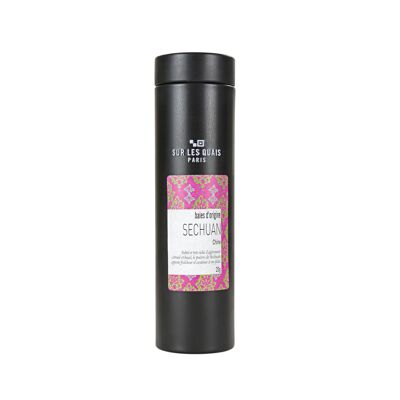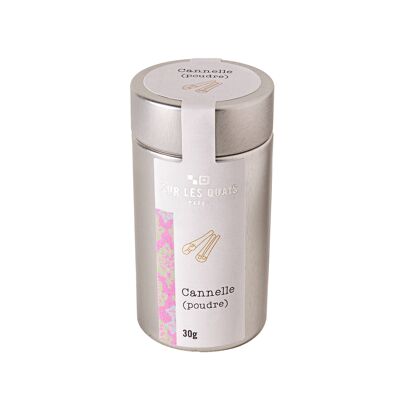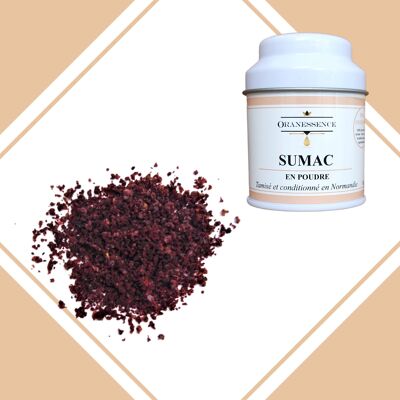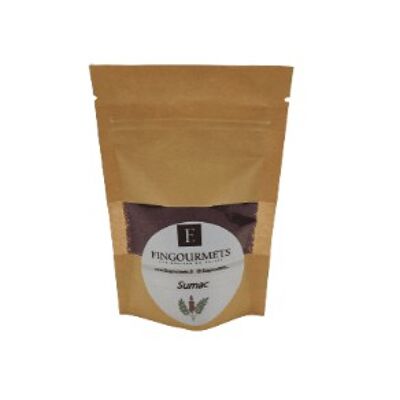


An essential pillar of Middle Eastern cuisine, sumac is the berry of a wild shrub that grows throughout the Mediterranean regions. This tree is found in southern Italy, particularly in Sicily, as well as in the Near East. With its lemony and deliciously tangy taste, Sumac is a central ingredient in meat skewers (lamb, veal or beef). It is also used to delicately flavor white fish, fresh cheese or poultry. In Lebanon, where its use is very common, Sumac is often combined with mint or sesame to enhance yogurt-based sauces used with falafel or labneh, the fresh cheese recipe typical of Eastern Mediterranean cuisine (Lebanese, Syrian, Palestinian or Greek cuisine). Sumac is used in many countries and regions for culinary purposes, including its widespread use in many Middle Eastern cuisines, including Lebanese, Syrian, Turkish, and Iranian cuisines. or it is often used to season meat dishes, vegetables, salads and mezze (appetizers), it is also found used in Mediterranean cuisine, especially in countries like Greece and Cyprus but also in the cuisine of the Caucasus where sumac is used in Georgian and Armenian cuisines, North African and even in the Southern United States where it is sometimes used as a substitute for lemon to season seafood dishes, grilled meats and salads. To try: Chicken Fatteh with Sumac, to use in tabbouleh, making homemade kebabs, for a Fattoush salad (Lebanese salad), Hummus, all kinds of poultry or fish skewers! Or in dishes like Kabab Barg, a traditional Iranian kebab, or in stews like fesenjan, a chicken or duck stew with walnuts and pomegranate. Sumac is an essential ingredient in the cuisine of Anglo-Israeli chef Yotam Ottolenghi, just like pomegranate molasses or Zaatar in his book Ottolenghi Flavour! Learn more: Sumac is a shrub or small tree that is native to West Asia, North Africa, and Southern Europe. It is grown for its cluster-shaped red fruits which are used as a spice to impart a tangy, slightly spicy flavor to foods. Sumac fruits are harvested when ripe, then dried and ground to produce a powder that is used as a spice. It is traditionally used in Arab, Iranian, Turkish and Israeli cuisine to add flavor to meat, fish, vegetable and rice dishes. It is also used to make soft drinks. Sumac also has medicinal uses in folk traditions. The leaves, fruits and roots have been used to treat various ailments, including digestive disorders, joint pain and skin infections. The use of sumac in cooking dates back to ancient times. Although the precise date of sumac's first use is not documented, it is clear that this spice has a long and rich history, dating back several millennia. Ancient civilizations adopted it for its multiple virtues, both culinary and medicinal, and this tradition has continued to this day. For example, we know that the ancient Greeks used sumac in their cooking and also for its medicinal properties. Hippocrates, often considered the father of medicine, mentions sumac in his writings. The Romans used sumac to season their dishes. Pliny the Elder, a Roman naturalist and philosopher, refers to sumac in his encyclopedia "Natural History."Origin: Türkiye




































